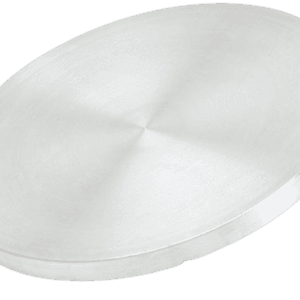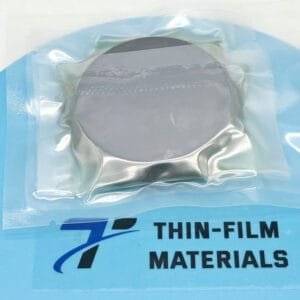Zirconium Oxide Sputtering Target Description

Zirconium oxide (ZrO2) exists in three distinct phases depending on temperature: monoclinic below 1170°C, tetragonal between 1170°C and 2370°C, and cubic above 2370°C. The higher the temperature, the higher the symmetry of the crystal structure, which is a common characteristic in phase transitions. A small addition of calcium or yttrium oxides can stabilize zirconia in the cubic phase even at lower temperatures. This stabilized form is often used in various applications, including gemstones like cubic zirconia. Unlike titanium dioxide (TiO2), which has titanium in a six-coordinated state across all its phases, monoclinic zirconia features zirconium in a seven-coordinated arrangement. This is due to the relatively larger atomic size of zirconium compared to titanium.
Zirconium Oxide Sputtering Target Specification
| Material Type | Zirconium Oxide |
| Symbol | ZrO2 |
| Color/Appearance | White, Solid |
| Melting Point (°C) | ~2,700 |
| heoretical Density (g/cc) | 5.89 |
| Sputter | RF, RF-R |
| Type of Bond | Indium, Elastomer |
| Comments | Films oxygen deficient, clear and hard. |
Zirconium Oxide Sputtering Target Application
Zirconium oxide, commonly known as zirconia, is widely used in producing hard ceramics, particularly in dental applications. Its uses extend to being a protective coating on titanium dioxide pigments, serving as a refractory material, and as a thin film coating material. Additionally, zirconia is utilized in insulation, fuel cells, abrasives, and enamels. Zirconia sputtering targets are often employed for thin film deposition, which is crucial in applications such as fuel cells, decoration, semiconductors, displays, LEDs, photovoltaic devices, and glass coatings.
Stabilized zirconia is particularly valuable in oxygen sensors and fuel cell membranes due to its high ionic conductivity, allowing oxygen ions to move freely through its crystal structure at elevated temperatures. This property, coupled with its low electronic conductivity, makes zirconia an essential material in the field of electroceramics. It is also used as a solid electrolyte in electrochromic devices. Additionally, zirconia serves as a precursor in producing lead zirconate titanate (PZT), a high dielectric constant material utilized in various electronic components.
Zirconium Oxide Sputtering Target Bonding
Specialized bonding services for Zirconium Oxide Sputtering Targets, including indium and elastomeric bonding techniques, enhance performance and durability. Thin Film Materials (TFM) ensures high-quality solutions that meet industry standards and customer needs.
We also offer custom machining of backing plates, which is essential for sputtering target assembly. This comprehensive approach improves target design flexibility and performance in thin film deposition. Our channels provide detailed information about bonding materials, methods, and services, helping clients make informed decisions.

Packaging
Our zirconium oxide sputter targets are meticulously tagged and labeled externally to facilitate easy identification and ensure strict quality control. We take extensive precautions to prevent any potential damage during storage or transportation, thereby preserving the integrity and quality of our products.






Reviews
There are no reviews yet.